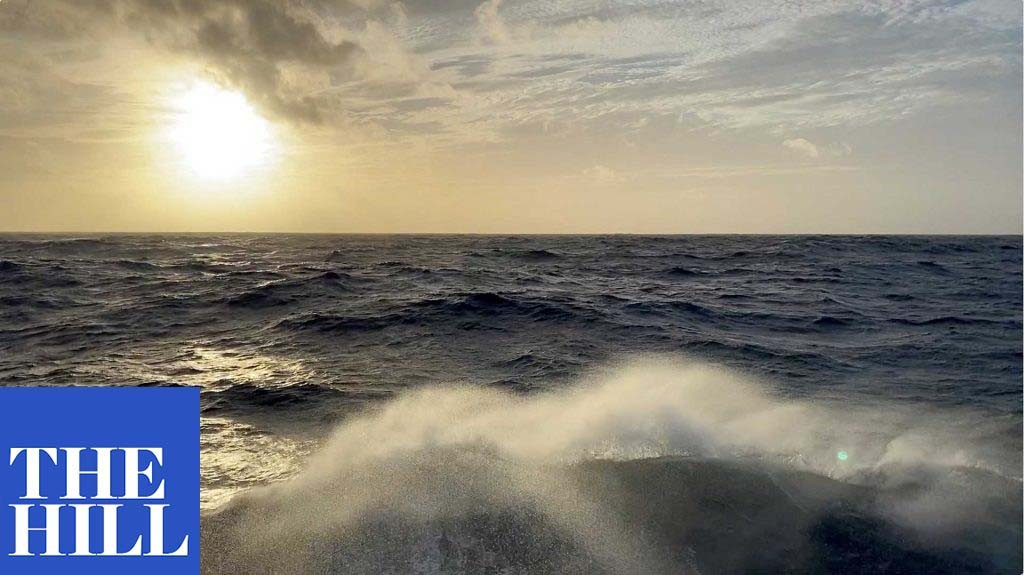
The power of the ocean
by Ken Buesseler, WHOI Senior Scientist
Carbon dioxide removal has been described both as humanity’s last, best hope to stave off the looming climate crisis, and as the stuff of dystopian science fiction. As is usually the case, reality falls somewhere in the middle. But if we take a moment to think about what we’re doing, then the ocean just may be able to come to our rescue.
Today, carbon dioxide in the atmosphere is rising faster than any other time in the past 66 million years and has reached levels not seen in at least the past 800,000 years. And there’s no sign this upward trajectory will lessen without a wholesale shift away from fossil fuels. Despite this, global policymakers have demonstrated little appetite for implementing the strict measures needed to accomplish such a shift.
As a result, in November, the UN-mandated Conference of the Parties declared at its most recent meeting (COP26) that society needs to adopt a “net zero” approach to carbon emissions. This means we need to draw down the amount of carbon dioxide in the atmosphere as fast or faster than human activity is forcing it up. This is where carbon dioxide removal (CDR) — and the ocean — may be able to help us.
Land- and ocean-based CDR strategies leverage and enhance the natural processes that remove carbon dioxide from the atmosphere and lock it safely away, where it will not contribute to global warming for decades, centuries or even millennia. The ocean covers more than two-thirds of the planet and already stores about 50 times more carbon than the atmosphere. So, it stands to reason that the ocean offers a glimmer of hope as we seek ways to achieve net-negative emissions.
In fact, since the dawn of the Industrial Age, the ocean has been quietly acting on our behalf to keep the climate from going haywire by absorbing an amount of carbon dioxide equal to about one-quarter to one-third of our emissions. Once dissolved in seawater, it becomes part of the ocean’s chemical makeup and, through photosynthesis by countless tiny algae, part of its biology, as well.
To better understand the options available to us, the National Academies of Science, Engineering, and Math convened an expert panel to develop a research agenda aimed at assessing the benefits, risks and potential for responsible scale-up of six specific ocean-based CDR strategies that leverage natural processes. These include electrochemical carbon dioxide stripping, seaweed cultivation, alkalinity enhancement, ecosystem recovery, nutrient fertilization and artificial upwelling and downwelling. The panel also estimated the costs and identified priorities for a research program that would attempt to both close the knowledge gaps and develop a shared framework for ethics, oversight and transparency. Such an effort is needed if we hope to stave off a future of severe and prolonged droughts, intense storms and flooding, as well as increasingly precarious water and food security for wide swaths of humanity, while also avoiding the potentially devastating consequences of unbridled geoengineering.
To be clear, altering the ocean merely to suit humanity’s whims should not be our goal, nor do the options under consideration present a way for us or for fossil fuel companies to continue with emissions-as-usual. Instead, we need to immediately and aggressively reduce emissions at the same time that we identify gaps in our knowledge about the effectiveness of CDR and associated risks.
We need to do so quickly because the clock is ticking on the climate time bomb we have built. New data indicate that a critical Antarctic ice shelf is being undermined by a warming Southern Ocean, which could trigger the collapse of the Thwaites Glacier in as little as three years, unleashing potentially devastating sea-level rise. There is also a very real danger that the economic opportunities presented by a burgeoning market for carbon credits could entice irresponsible actors to pursue untested ocean CDR solutions at scale, with unknown impacts on the ocean and the billions of people who depend on it.
We have complex and difficult decisions to make and there’s currently no way to choose the correct path forward because we don’t yet know enough to make a decision. Instead of stumbling blindly along the path of least resistance that got us where we are now, we have the opportunity to do things differently and act in a responsible manner. The ocean can help us, but first we have to make sure we know what we’re doing so we can weigh the potential benefits against the potential harms of such ocean-based climate interventions and make informed choices.
Ken Buesseler is a Woods Hole Oceanographic Institution senior scientist and was also a co-author of the National Academies of Sciences, Engineering and Medicine report “A Research Strategy for Ocean Carbon Dioxide Removal and Sequestration.”
This article first appeared in The Hill 12/23/2021